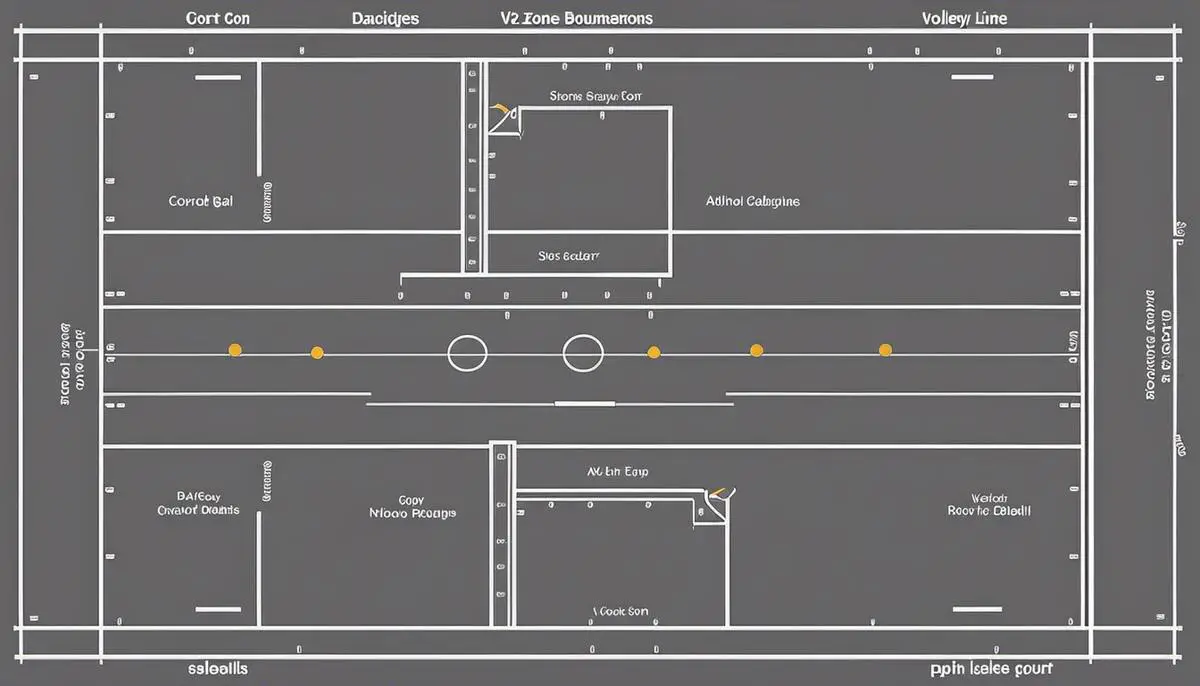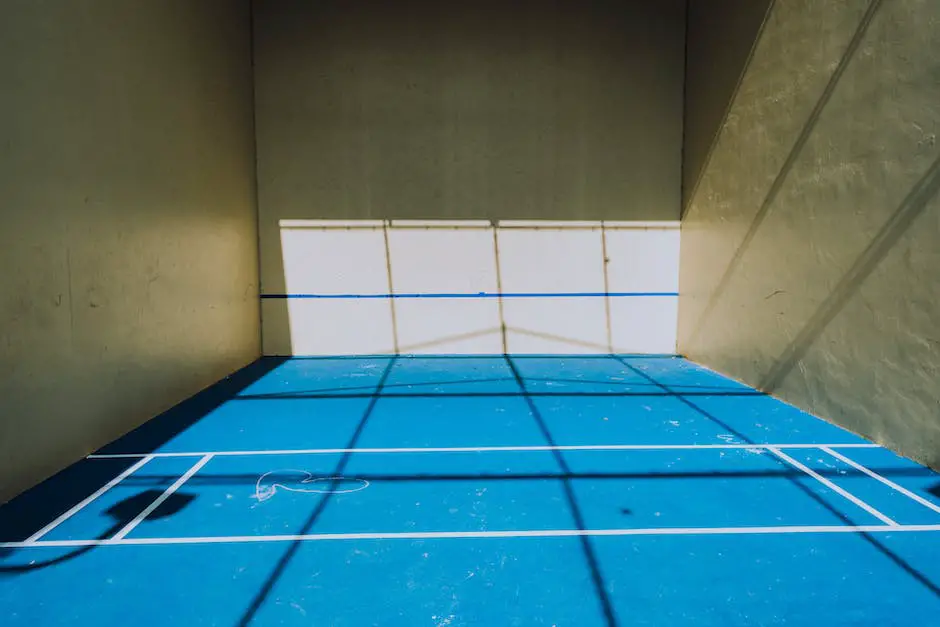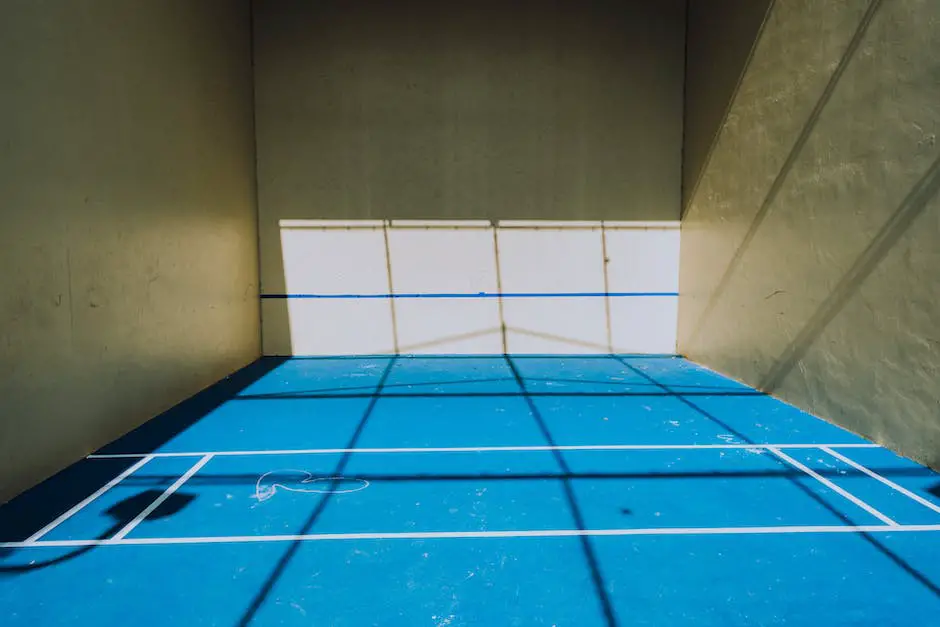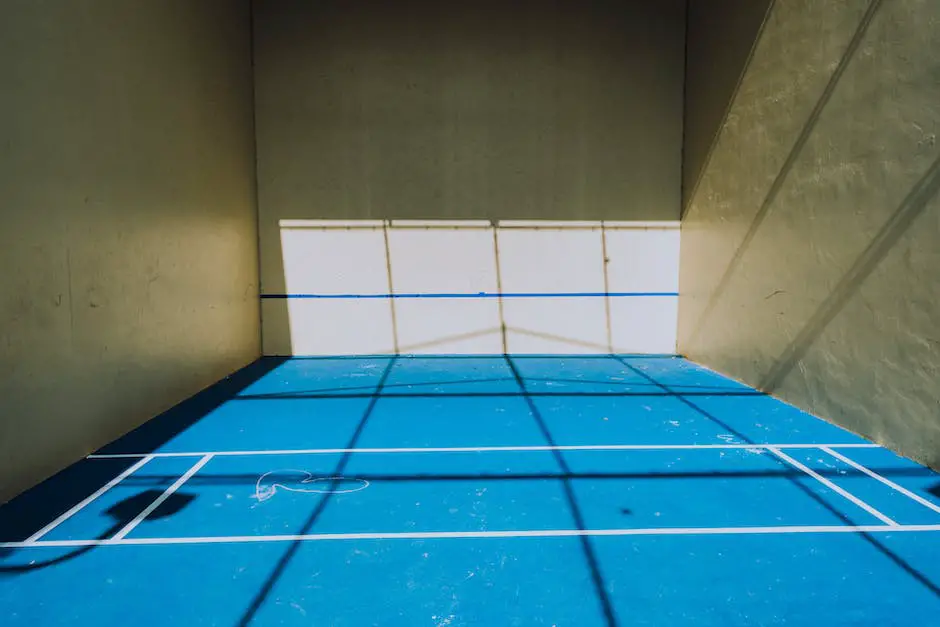In the amazing sport of Pickleball, fully understanding the rules can significantly enhance your playing experience. This knowledge extends from the basic details such as court dimensions, serving rules, and scoring system, up to more advanced concepts including game strategies and tactical shot placements. Discovering the crucial roles of the ‘non-volley zone’ or ‘kitchen’, and the ‘two-bounce rule’, will also lead to a more effective and competitive gameplay. Whether for singles or doubles play, the rules of the game can serve as your guide to not just enjoy Pickleball, but also master it.
Basics of Pickleball Rules
Pickleball Court Dimensions
The standard size for a pickleball court is 20 feet wide by 44 feet long, identical to a doubles badminton court. The court is divided into two equal rectangles by a net that stands 36 inches tall on the edges and 34 inches in the middle. The area within seven feet from the net on both sides is called the ‘non-volley zone’ or the ‘kitchen’. It’s crucial to understand and respect the dimensions of the court to achieve better strategy and avoid penalties.
Pickleball Serving Rules
To serve in pickleball, the server must stand behind the baseline and serve diagonally to the receiver in the adjacent service court. The serve must be underarm with the paddle’s face below the wrist. A served ball must clear the non-volley zone, or the ‘kitchen’, and land within the server’s diagonal court. Additionally, serving alternates between teams and players in doubles play.
Scoring in Pickleball
Scoring in pickleball is unique as points can only be scored by the serving team. The game generally commences with the player on the right serving first. If the serving team wins a rally, they score a point, and the server moves to the other side of the court for the next serve. Teams switch sides after each point until a fault happens. Games are typically played to 11, 15, or 21 points with a winning margin of at least two points.
Faults and Penalties
A fault in pickleball happens if a rule is violated, thus ending the rally. Faults include stepping into the non-volley zone (the ‘kitchen’) while volleying a ball, hitting the ball out of bounds, failing to get the serve over the net, or volleying the ball before it has bounced once on each side of the net during the first part of each rally, which is also called the “two-bounce rule”. Committing a fault typically results in the serve being handed to the opposition or to the other server on the serving team in doubles play.
The Kitchen and The Two-Bounce Rule
The ‘kitchen’ or the non-volley zone is a seven-feet area on both sides of the net. A player cannot volley a ball while standing in this zone, hence the name ‘non-volley zone’. The two-bounce rule states that the ball must bounce once on each side before volleys are allowed. This rule is intended to maintain the fast-paced, yet strategic nature of the game.
Singles and Doubles Play
In singles play, there’s only one player on each side and the same player serves throughout the game. All rules apply as with doubles play, including serving diagonals, the non-volley zone, and the two-bounce rule. For doubles play, the two players on the serving team alternate serves, while the opponents must each return a serve before they can start scoring. The serving team continues to serve until they commit a fault, after which the serve passes to the opponents.

Advanced Pickleball Rules
Advanced Pickleball Rules: Strategic Shot Placement
The placement of your shots can give you the upper hand in a pickleball game. It’s important to hit the ball at the opponent’s non-dominant hand or at their feet, forcing them to make a difficult return. Also, try to direct the ball to the deeper part of the court when serving or returning, this tends to keep the opponent back and limits their opportunities to attack.
Serve and Return Strategies in Pickleball
The server must serve the ball underhand, hitting it diagonally across the court. It should bounce once in the opponent’s service box before the opponent returns it. The serve strategy often includes placing the serve deep into the service court to push the opponent far back and off-balance. However, the returner can win points by hitting deep returns, limiting the server’s ability to get to the net quickly.
Rules Variations for Tournaments
Tournament games may utilize rules beyond those in typical pickleball games. For example, some tournaments play the “two bounce rule”; the ball must bounce once on each side before volleys are allowed. In tournaments, you must also win by two points, and games are often played to 11, 15, or 21 points. Servers generally only get one chance to serve correctly in tournaments, while recreational play often allows for several serve attempts.
Player Conduct and Etiquette
Good sportsmanship is essential in any game and pickleball is no exception. Refrain from distracting or interfering with players during their serve sequence. Respectfully dispute line calls and if in doubt, the benefit of the doubt should be given to the opponent. Players should always make an effort to avoid hitting their opponents with the ball. It’s important to communicate clearly and politely with your partner and opponents throughout the game.
Upholding Rules and Enhancing Strategy
Understanding advanced rules of pickleball can significantly increase your strategic gameplay and contribute to a competitive yet respectful match. Therefore, continuous learning and practice of the sport’s more complex dynamics should be prioritized to achieve top-tier prowess and command of the game. Rules may vary based on the specific league or tournament, so players should familiarize themselves with the specifics before participating.

Pickleball Game Play Practice
Understanding Pickleball Rules
Pickleball is a sport that combines elements from tennis, table tennis, and badminton. Matches may be played in singles (one player per side) or doubles (two players per side). Equip yourself with a paddle and a pickleball, a plastic ball with holes that is similar to a whiffle ball.
Objective
The objective of a game is to score points by hitting the ball across a net and into the opponents’ court without the opponents returning the ball successfully. The first player/pair to reach 11 points wins, but they must win by a margin of at least 2 points.
Initial Serve
A game begins with a serve. The server must serve from behind the back baseline of the court, hitting the ball diagonally to the opponent’s service court. Be aware of the double-bounce rule: after a serve or return, the ball must bounce once on each side of the net before players can volley the ball (hit it before it bounces). In addition, the serve must be made underhand, and the paddle should make contact with the ball below the server’s waist.
Non-Volley Zone
There’s a seven-foot area on either side of the net referred to as the non-volley zone or ‘kitchen’. Players are prohibited from volleying the ball while standing within this zone.
Scoring System
In pickleball, only the serving side can score points. Moreover, games typically use a unique scoring system that includes the server’s score, the receiver’s score, and, in doubles, which server is serving – first or second.
Maintaining the Flow of the Game
Signals are used for communication in pickleball, so make sure to call out the score before every serve to ensure everyone is on the same page. If a ball from another court enters your court, call “ball on the court” for safety and stop play immediately.
Mock Games for Practice
To ensure a deep understanding of the rules, initiate mock games. Start by rotating the serve between partners on the same team in doubles play. Recreate scenarios that test the double-bounce rule – for instance, volleying the ball prematurely is a fault.
It is also crucial to practice scenarios that test the non-volley zone rule. Aim to get your opponent to step into the non-volley zone by placing your shots near the net. A fault is awarded if a player volleys the ball while standing in the non-volley zone.
Scoring Practice
Organize practice matches using the correct pickleball scoring system. Practice calling out the score before every serve, incorporating the server’s score, the receiver’s score, and, in a doubles game, denoting which server is serving.
Conclusion
Making these critical elements a part of your game through practice will ensure you have a thorough understanding of pickleball rules.

Review and Update on Pickleball Rules
Understanding the Basics of Pickleball Rules
Pickleball, a racquet sport that combines elements of tennis, badminton, and ping-pong, is governed by a specific set of rules. As beginners, it is essential to understand the basic serving rules, scoring system, and concepts such as the double bounce rule and the non-volley zone. More detailed rules encompass player conduct, equipment specifications, and tournament procedures.
Stay Updated with Pickleball Rule Changes
Changes to pickleball rules occur periodically to improve the game’s structure and ensure fair play. You can stay updated with the sport’s evolving rules and guidelines by periodically reviewing the International Federation of Pickleball’s (IFP) official rulebook.
Reviewing the Official Rulebook for Updates
Begin your rule review by visiting the official website of the International Federation of Pickleball. Directly navigate to their ‘Rulebook’ section. This document outlines the play rules, equipment regulations, and tournament formats. Generally, the IFP releases its updated rulebook at the start of each year. Make sure to download the latest version or subscribe to their email updates.
Checking for Rule Updates and Changes
Once you have the current rulebook, ensure to check each section diligently, even if you are well-versed with the previous rules. Sometimes, significant rule changes are highlighted or marked to draw attention. Specifically look for updates in sections related to player conduct, equipment dimensions and specifications, serving and scoring rules, non-volley zone rules, or tournament procedures.
Understand the Changes in Pickleball Rules
Take time to understand any new or adjusted rules completely. Updated rules can affect your performances, so it’s crucial to be thoroughly aware of them. If you encounter confusing changes, interact with experienced players, coaches or refer to specific online discussions explaining the changes.
Practicing the Updated Rules
After understanding the changes, the next step is practical application. Incorporate the updated rules into your game. Practice in controlled situations to get used to the new changes before jumping into competitive action. If required, take part in practice matches or training sessions often held by local clubs.
Stay Connected with the Pickleball Community
Active involvement in the pickleball community can assist you in understanding rule changes. Participate in discussions on social media platforms, join local pickleball clubs or online forums to share experiences, interpret rule changes, and understand how they affect gameplay strategies.
Remember that the purpose of these changes is to enhance the sport and promote more fair play. It is part of every pickleball player’s responsibility to stay updated on the evolving rules to ensure adherence to the sport’s standards and traditions.

Indeed, mastering Pickleball does not only involve physical training and mental conditioning, but also constant learning and understanding of the sport’s rules. Applying these rules from mere practice games to competitive tournaments unveils a deeper appreciation for the game. Furthermore, embodying proper player conduct and etiquette enhances not only personal skills but also the entire Pickleball community. As the sport continues to evolve, it is recommended to stay updated by regularly reviewing the International Federation of Pickleball’s official rulebook. After all, becoming a true Pickleball enthusiast means keeping abreast with the game’s ever-changing dynamics.